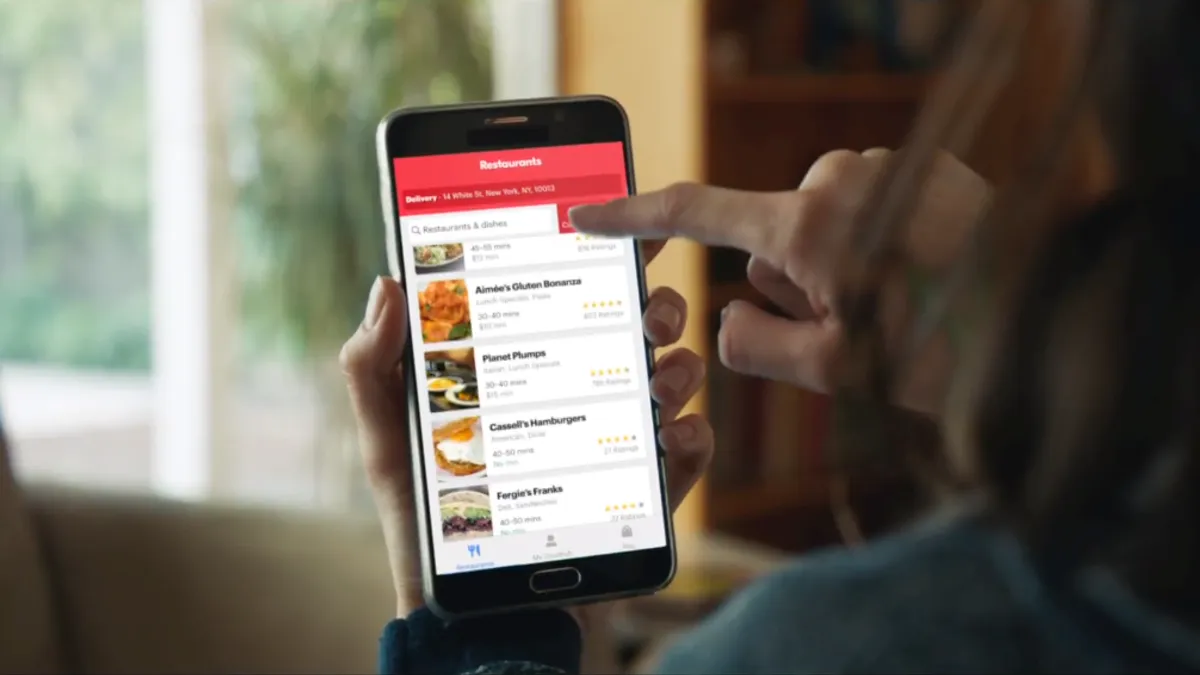Dive Brief:
- Restaurant-delivery company GrubHub provided a lower forecast for a key earnings metric and said Chief Operating Officer Stan Chia resigned to pursue another opportunity, per a regulatory filing. The stock plunged 15% to $92.73 a share early Thursday, while the S&P 500 stock index gained 1.3%.
- GrubHub forecast that adjusted earnings before interest, tax, depreciation and amortization will be $40 million to $50 million in Q4 2018, bringing the FY 2018 total to $231.6 million to $241.6 million, less than its prior forecast of $256 million to $270 million.
- GrubHub’s other results beat estimates in Q3 2018. Its profit rose 75% to $42.2 million from a year earlier, or 45 cents a share to exceed the analysts’ average estimate of 41 cents, per Reuters. Revenue grew 52% to $247 million from a year earlier, greater than the Wall Street estimate of $239 million, as gross food sales expanded 40% to $1.2 billion for the period.
Dive Insight:
GrubHub's stellar results for Q3 belie worrisome signs for the food delivery company, including a lower profit forecast and the resignation of COO Chia, who joined the company in 2015.
Despite a massive rise in profits and a user base that grew 67% to 16.4 million from the same period a year ago, GrubHub is fighting off growing competition. While once the only real player in the space, GrubHub now must contend with deep-pocketed rivals Postmates and Uber Eats, who are expanding rapidly. Just this week, Uber Eats announced plans to cover more than 70% of the U.S. population and has found partnerships with major companies like McDonald's and Subway. As for Postmates, the Verge reported earlier this month that it's now available in 60% of the country after bringing its services to an additional 135 cities, bringing its numbers to 550.
GrubHub, however, shows no signs of stopping its own aggressive expansion plans. In September, the company bought campus food ordering platform Tapingo for $150 million and closed the takeover of mobile ordering and payments platform LevelUp in July. In the company's earnings call, CFO Adam DeWitt said the company plans to invest an incremental $20 million to $30 million in marketing and delivery expansion in the current quarter.
One of GrubHub's key advantages is its first-mover status in many markets. A study from E-Poll Market Research showed that Grubhub was the top third-party food delivery service with millennials, with a 41% usage rate among those consumers. Doordash was second (36%), followed by UberEats (32%) and Postmates (30%). Grubhub is also the most used delivery app across the board, at 36%, and with the company's recent acquisition of Yelp's Eat24 app, that is likely even higher now.
The food-delivery market is still in a high-growth stage in the United States. Sales through third-party delivery services totaled $5 billion for the first two quarters of 2018, a 55% jump from a year earlier, according to research aired by Technomic at FSTEC. Grubhub’s stronghold is the Northeast, where it commands a market share of more than 80% in densely populated areas like New York. Postmates and DoorDash are the powers on the West Coast, according to the Technomic data, albeit with much lower shares of 32% and 30%, respectively.












